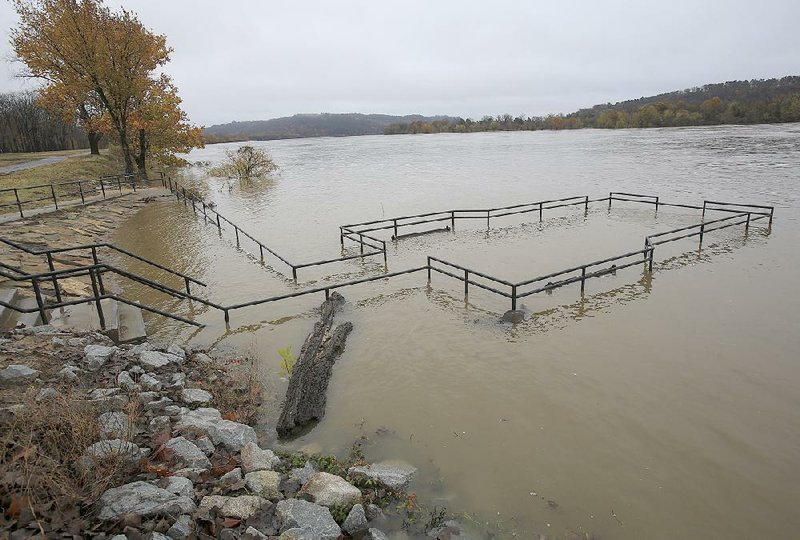The water level in Arkansas' largest lake rose by more than 6 feet over the four-day Thanksgiving weekend, as steady rains drenched most of the state.
But there was no flash flooding in Arkansas because of the rain, said Michael Brown, a meteorologist with the National Weather Service in Little Rock.
The storm front that moved into Arkansas on Thursday brought enough rain to raise the water level in Lake Ouachita from 570 feet to 576.5 feet, Brown said. But that's still below the lake's normal pool of 578 feet. And it's well below a lake level of 586 feet at the end of May, he said.
On Monday, the National Weather Service's precipitation map showed a splash of orange from central Texas to Little Rock, indicating most of that area had received at least 6 inches of rain over the previous four days, and parts of it had gotten as much as 10 inches. The heaviest precipitation in Arkansas was in the Ouachita Mountains.
Mena got the most rain in Arkansas with 9.97 inches from Thursday through noon Monday, said Julie Lesko, Upper Air Program Leader with the National Weather Service in Little Rock.
James Reeves, the Polk County emergency management director, said the rain caused no serious flooding. Mena is the Polk County seat.
"Our terrain's real steep, and it runs off us real quickly," Reeves said. "It blocked a couple of creek crossings for a couple of hours. But other than that, there was nothing long lasting or long-term effect."
Brown said flash flooding didn't occur because the rain was spread out over several days. During the most intense part of the storm, a quarter inch of rain fell per hour, he said.
By contrast, rainfall was much heavier in 2010, when a storm caused flash flooding at the U.S. Forest Service's Albert Pike Recreation Area, which is 25 miles southeast of Mena.
Over a two-hour period on June 11, 2010, as much as 4.73 inches of rain fell near the Albert Pike campground, according to a report by Robert R. Holmes, national flood hazard coordinator with the U.S. Geological Survey.
The water level in the Little Missouri River rose from 3 feet to 23 feet within 5½ hours. Twenty people died as the river churned through the campground, uprooting trees and carrying away RVs.
Reeves said Polk County is prone to thunderstorms. Holmes' study bears that out.
The Ouachita Mountains cause an "orthographic effect" that can intensify rainfall, Holmes wrote. As a warm air front moves across the landscape, the mountains lift it to a higher elevation, which cools the air causing clouds and sometimes storms.
While western Arkansas got most of the rain over the Thanksgiving weekend, the storm tracked through central Arkansas, dumping 5.81 inches of rain on North Little Rock from Thursday through noon Monday, Lesko said.
"We really were OK," said Andy Traffanstedt, the Pulaski County emergency manager. "We didn't have anything major at all."
Traffanstedt said a few Pulaski County roads were closed Friday night because of high water or downed trees, but those roads were reopened Saturday morning after the water receded.
Brown said it appeared that Little Rock would have its third-wettest November since record-keeping began in 1875, Brown said. As of Monday morning, Little Rock had 10.9 inches of rain for November, which was still well below the record of 14.5 inches in 2011.
Other rain totals from Thursday through noon Monday include 8.63 inches in Mount Ida, 5.8 inches in Arkadelphia, 5.74 inches in Little Rock, 5.66 inches in Pine Bluff, 5.27 inches in Hot Springs, 4.27 inches in Jonesboro, 4.24 inches in Texarkana, 3.52 inches in Fort Smith, 3.04 inches in El Dorado and 3.04 inches in Fayetteville.
Nicole McGavock, a meteorologist with the National Weather Service in Tulsa, said both Fort Smith and Fayetteville will have their fifth-wettest November on record.
As of Monday morning, Fort Smith had a total of 9.35 inches of rain for November, and Fayetteville had a total of 8.38 inches.
Metro on 12/01/2015
